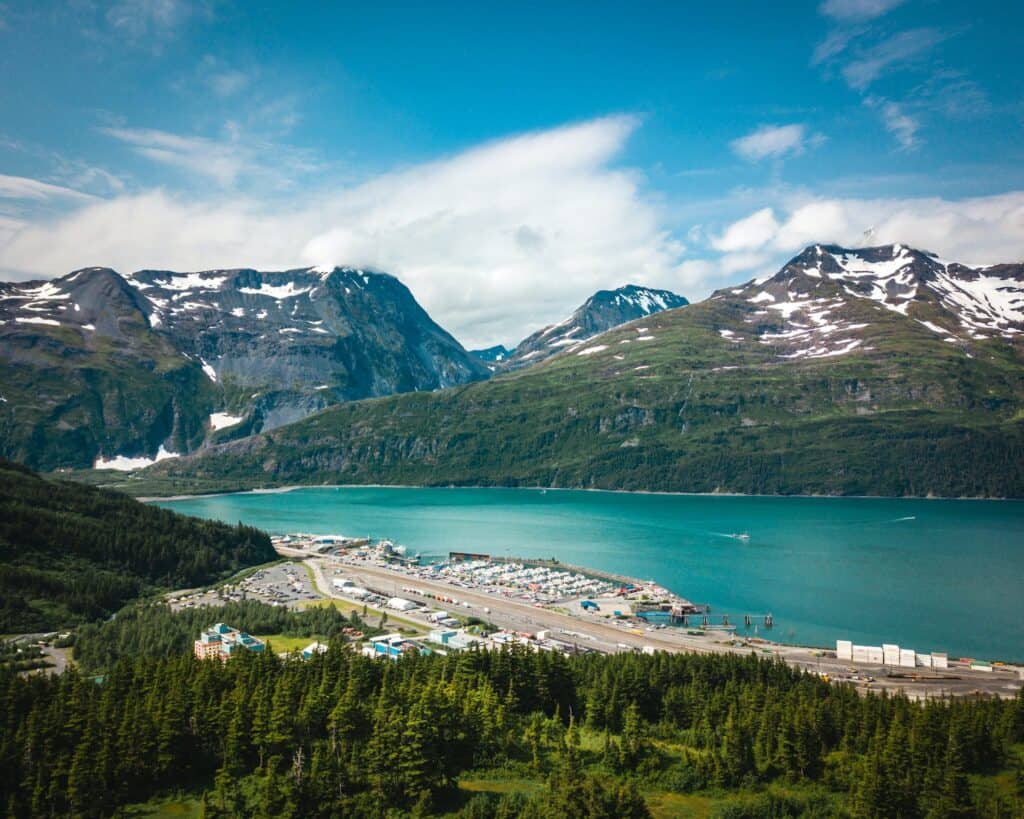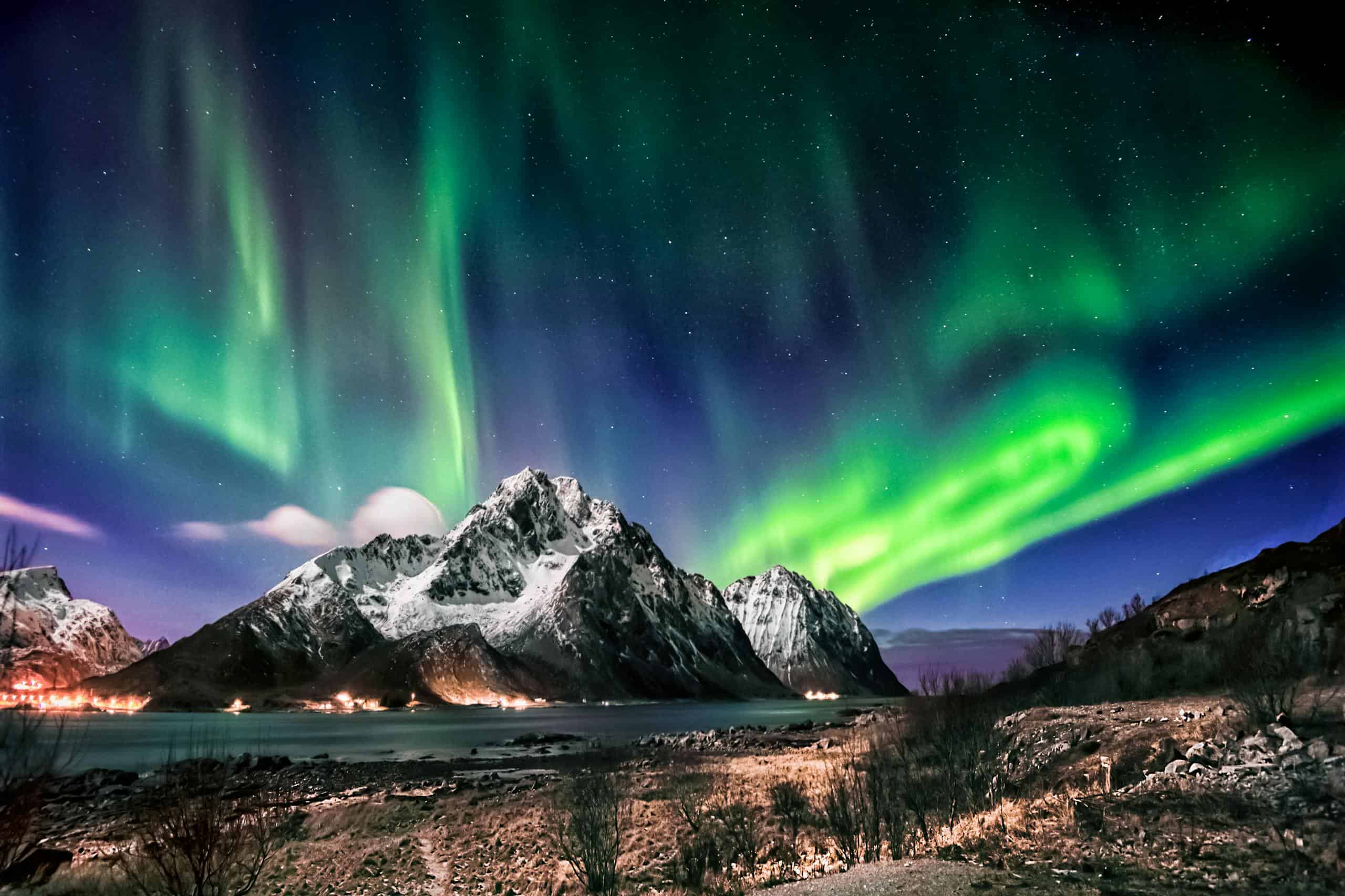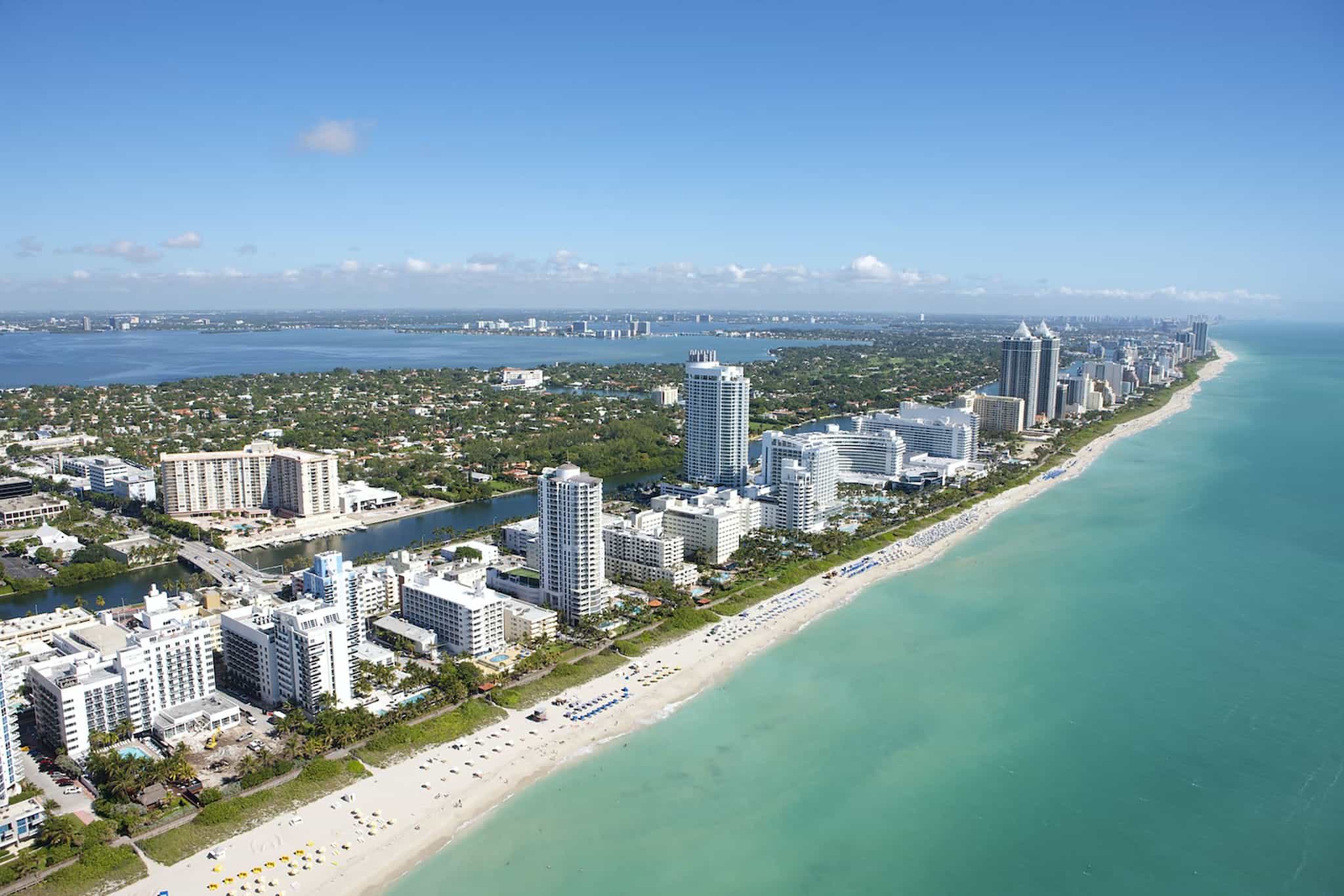What to Wear in Alaska in Summer: Essential Tips for Your Trip
There are some affiliate links below, but they are all products I highly recommend. For more info, view my disclosure here.
When planning a trip to Alaska in the summer, it’s important to consider the weather and pack accordingly. While the state is known for its cold temperatures and snow, summers can actually be quite pleasant with temperatures ranging from the mid-50s to 70s Fahrenheit. However, weather can be unpredictable, so it’s important to be prepared for all conditions.
When it comes to what to wear in Alaska in the summer, layering is key. Start with a base layer of moisture-wicking fabric to keep you dry and comfortable. From there, add a lightweight insulating layer such as a fleece or down jacket. Finally, top it off with a waterproof and windproof outer layer to protect against rain and gusts of wind. Don’t forget to bring a hat, gloves, and sunglasses to protect your head, hands, and eyes from the sun and wind.
Understanding Alaska’s Summer Climate
When packing for your trip to Alaska in the summer months understand the climate. While Alaska is known for its cold temperatures and snow, the summers can actually be quite mild.
During the summer months of June, July, and August, temperatures in Alaska typically range from the mid-50s to the mid-70s Fahrenheit. However, note that temperatures can vary greatly depending on your location within the state. For example, temperatures in the coastal areas tend to be cooler than those in the interior regions.
Another unique aspect of Alaska’s summer climate is the long days. During the summer solstice in June, some areas of Alaska experience nearly 24 hours of daylight. This means that you will have plenty of time to explore and enjoy the beautiful scenery that Alaska has to offer.
While the temperatures may be mild be prepared for a variety of weather conditions. Alaska is known for its unpredictable weather, and it is not uncommon to experience rain, wind, and even snow during the summer months. Be sure to pack clothing that can be layered, as well as a waterproof jacket and sturdy shoes.
Alaska’s summer climate can be mild with long days and variable weather conditions. By understanding the climate and packing accordingly, you can ensure a comfortable and enjoyable trip to the Last Frontier.
Essential Clothing for Daytime
When packing for your summer trip to Alaska, it’s important to remember that the weather can be unpredictable and temperatures can vary widely throughout the day. Here are some essential clothing items to ensure you stay comfortable during the daytime.
Base and Outer Layers
Start with a good base layer, such as a moisture-wicking shirt, to keep you dry and comfortable. Long sleeve shirts are recommended to protect your arms from the sun and bugs. On top of your base layer, add an outer layer to keep you warm and dry in case of rain or wind. A lightweight waterproof jacket is a great option, but make sure it’s breathable to prevent overheating.
Accessories for Comfort
In addition to your clothing layers, there are a few accessories that can make a big difference in your comfort level. A warm hat is essential, even in the summer, as temperatures can drop quickly. Sunglasses are also important to protect your eyes from the bright sun and glare off the water.
Consider bringing a small daypack to carry extra layers, snacks, and water. This will allow you to easily adjust your clothing as needed and stay hydrated throughout the day. Don’t forget to wear comfortable shoes, as you’ll likely be doing a lot of walking and exploring.
By packing these essential clothing items and accessories, you’ll be prepared for whatever the Alaska summer weather may bring.
Dressing for Alaska’s Evenings and Nights
When it comes to dressing for Alaska’s summer evenings and nights, it’s important to be prepared for the colder temperatures. Even though summer days can be warm, the temperature can drop significantly at night, especially in areas closer to the coast. Here are some tips to help you stay warm and comfortable during your Alaska trip.
Warm Layers
The key to staying warm during Alaska’s summer nights is to dress in layers. A fleece jacket is a great option for a mid-layer, as it’s lightweight and provides excellent insulation. You can also consider wearing a long-sleeved shirt or sweater underneath for added warmth.
If you’re planning on spending a lot of time outdoors, it’s a good idea to invest in a quality pair of long underwear. These will keep your legs warm and can be worn under your pants without adding bulk. Look for materials like wool or synthetic blends that will wick away moisture and keep you dry.
Protective Gear
In addition to warm layers, it’s important to protect yourself from the elements. A good rain jacket is a must-have for any trip to Alaska, as rain is common even in the summer months. Look for a jacket that is waterproof and breathable, so you can stay dry without getting too hot.
If you’re planning on doing any outdoor activities like hiking or camping, it’s also a good idea to bring along a sleep mask. Alaska’s summer nights are known for their long hours of daylight, which can make it difficult to sleep. A sleep mask will help block out the light and allow you to get a good night’s rest.
Overall, dressing for Alaska’s summer evenings and nights is all about being prepared. By packing warm layers and protective gear, you can enjoy all that Alaska has to offer without worrying about the colder temperatures.
Footwear for Various Activities
When it comes to footwear for your Alaskan summer adventure, you’ll want to consider the activities you have planned. Here are some options to keep in mind:
- Hiking boots: If you plan on doing any hiking, a sturdy pair of hiking boots with good ankle support is essential. Look for waterproof options to keep your feet dry in case of rain or wet terrain.
- Water shoes: If you’re planning on water activities such as kayaking or rafting, a pair of water shoes with good traction will be useful. They will help prevent slips and falls on wet rocks or slippery surfaces.
- Athletic sneakers: For general sightseeing and exploring, a comfortable pair of athletic sneakers will do the trick. Look for breathable options to keep your feet cool on warmer days.
It’s important to note that waterproof layers are also crucial for any outdoor activity in Alaska. Even if you have waterproof shoes, your feet can still get wet if you’re not wearing proper rain gear.
Overall, make sure to choose footwear that is comfortable, durable, and appropriate for the activities you have planned. With the right shoes, you’ll be able to fully enjoy all that Alaska has to offer.
Rain Gear for Sudden Weather Changes
When visiting Alaska in the summer be prepared for sudden weather changes. Rain gear is a must-have in your packing list, especially if you plan to spend time outdoors. Here are some essential rain gear items to consider:
Waterproof Jacket
A waterproof jacket is a must-have item for any trip to Alaska in the summer. Look for a jacket that is both waterproof and breathable, so you can stay dry and comfortable in any weather. A good waterproof jacket should also have a hood to protect your head from rain and wind.
Rain Pants
In addition to a waterproof jacket, consider packing a pair of rain pants. These will keep your legs dry in case of heavy rain or wet conditions. Look for rain pants that are lightweight and packable, so you can easily store them in your backpack or luggage.
Rain Gear
If you plan to spend a lot of time outdoors, consider investing in a full rain gear set. This typically includes a waterproof jacket, rain pants, and waterproof boots. With a rain gear set, you can stay dry and comfortable in any weather conditions.
Overall be prepared for sudden weather changes when visiting Alaska in the summer. By packing the right rain gear, you can stay dry and comfortable during your trip.
Wildlife Viewing and Outdoor Adventures
When visiting Alaska in the summer, wildlife viewing and outdoor adventures are a must-do activity. To fully enjoy these experiences, you’ll want to make sure you have the right gear.
It’s important to pack insect repellent to protect yourself from mosquitoes and other biting insects. These pests can make your outdoor adventure a miserable experience, so it’s best to be prepared.
Binoculars are also a must-have item for wildlife viewing. They allow you to get a closer look at animals from a safe distance, without disturbing them. Make sure to pack a high-quality pair to fully appreciate the beauty of Alaska’s wildlife.
A day pack is essential for carrying all your gear while you’re out exploring. It should be comfortable, lightweight, and have enough space to hold your water bottle, snacks, and other essentials.
Alaska offers a wide range of outdoor activities, including hiking, fishing, kayaking, and more. Make sure to pack appropriate clothing and gear for the activity you plan to do. For example, if you’re hiking, you’ll want to wear sturdy hiking boots and bring a waterproof jacket in case of rain.
Finally, when wildlife viewing, it’s important to remember that you are a guest in their home. Respect their space and observe them from a safe distance. Do not approach or feed them, and always follow Leave No Trace principles.
By following these tips and being prepared, you’ll have an unforgettable wildlife viewing and outdoor adventure experience in Alaska’s beautiful summer wilderness.
Specialized Gear for Unique Alaskan Experiences
When planning your summer trip to Alaska, it’s important to consider the unique experiences you may encounter and pack accordingly. Here are some specialized gear recommendations for popular Alaskan activities:
Glacier Hiking
Glacier hiking is an exciting and unique activity to experience in Alaska. To ensure you have a safe and enjoyable hike, it’s important to have the proper gear. You’ll need sturdy hiking boots with good ankle support, crampons for traction on the ice, and a helmet for protection. It’s also recommended to dress in layers, including a waterproof jacket and pants, as the weather can change quickly on the glacier.
Flightseeing Tour
A flightseeing tour is a great way to see the vast and breathtaking Alaskan landscape from above. To make the most of your experience, it’s important to dress comfortably and in layers. Wear a warm jacket, as it can get chilly at high altitudes, and bring a camera to capture the stunning views.
Dog Sledding
Dog sledding is a popular activity in Alaska, but it’s important to dress warmly as temperatures can drop significantly. Wear a warm hat, gloves, and boots, and dress in layers to stay comfortable throughout the ride. It’s also recommended to bring hand warmers and a camera to capture the unforgettable experience.
Fishing Gear
Alaska is known for its incredible fishing opportunities, but it’s important to have the proper gear to make the most of your trip. Bring a sturdy fishing rod, reel, and line, as well as a fishing license. Dress in layers and wear waterproof gear, as you may be standing in water for extended periods of time.
By packing the right gear for your unique Alaskan experiences, you’ll be able to fully enjoy all that this beautiful state has to offer.
Packing for an Alaskan Cruise
When preparing for an Alaskan cruise, it’s important to pack appropriately for the weather and the activities you’ll be participating in. Here are some tips on what to pack for your Alaskan cruise.
Casual Attire
During the day, casual attire is appropriate for most activities on the cruise ship and during shore excursions. Be sure to pack comfortable walking shoes for exploring ports of call and warm layers for cooler temperatures. It’s also a good idea to bring a waterproof jacket or poncho in case of rain.
Formal and Evening Wear
Most Alaskan cruises have one or two formal nights where passengers are encouraged to dress up for dinner and evening events. The dress code for formal nights is typically cocktail dresses or dress pants with a dress shirt for men. However, if you prefer not to dress up, there are usually alternative dining options available on the ship.
For other evenings, resort casual attire is appropriate. This includes dresses or skirts for women and slacks or khakis with a collared shirt for men. Jeans, shorts, and athletic wear are typically not allowed in the dining room or other public areas in the evening.
Overall, packing for an Alaskan cruise requires a balance of practical and formal attire. By following the dress code guidelines and packing for the activities and weather, you’ll be able to enjoy your cruise in comfort and style.
Clothing Tips for Specific Regions
Southeast Alaska
Southeast Alaska is known for its mild and wet climate, with temperatures ranging from the mid-50s to low 70s°F in the summer. To stay comfortable, it is recommended to wear layers of clothing that can be easily removed or added as needed. A waterproof jacket and pants are essential to protect against rain and wind. It is also recommended to bring waterproof gloves and a hat to keep your head and hands dry.
Arctic Circle
The Arctic Circle in Alaska is known for its extreme temperatures, with summer temperatures ranging from the mid-30s to low 50s°F. Wear warm and insulated clothing to stay comfortable. A good quality parka, thermal underwear, and warm boots are essential. It is also recommended to bring gloves, a hat, and a scarf to protect your face and hands from the cold wind.
Remember to pack appropriate clothing for the region you are visiting in Alaska. Always check the weather forecast before heading out and be prepared for sudden changes in weather. With the right clothing, you can enjoy your summer trip to Alaska comfortably.
Safety and Comfort Considerations
When packing for your trip to Alaska in the summer, it’s important to consider safety and comfort. Here are some key items to keep in mind:
Sunscreen
Even though Alaska is known for its cooler temperatures, the sun can still be strong during the summer months. Be sure to pack sunscreen with a high SPF to protect your skin from harmful UV rays. Apply it liberally and frequently, especially if you plan on spending a lot of time outdoors.
First Aid Kit
It’s always a good idea to have a basic first aid kit on hand when traveling, and this is especially true in Alaska where medical facilities may be far away. Pack items such as band-aids, gauze, antiseptic wipes, and pain relievers. If you have any prescription medications, make sure to bring enough for the entire trip.
Bug Spray
Alaska is home to a variety of biting insects, including mosquitoes and black flies. To avoid being bitten, pack a strong bug spray with DEET. You may also want to consider wearing long sleeves and pants, especially during dawn and dusk when insects are most active.
Water Bottle
Staying hydrated is crucial when traveling in Alaska, especially if you plan on hiking or engaging in other outdoor activities. Bring a reusable water bottle and fill it up frequently. If you’re concerned about the quality of tap water, consider investing in a water filtration system or purchasing bottled water.
By packing these essential items, you’ll be better prepared to enjoy your trip to Alaska in the summer while staying safe and comfortable.

Creating Your Alaska Summer Packing List
When it comes to packing for an Alaska summer, it’s important to remember that the weather can be unpredictable and vary greatly depending on where you are in the state. Therefore, it’s essential to pack layers that you can easily add or remove as needed.
Start with a good base layer, such as moisture-wicking t-shirts and long underwear. From there, add a warm fleece or sweater, waterproof jacket, and pants. Don’t forget to pack a hat, gloves, and a scarf for those chilly mornings and evenings.
In addition to clothing, there are a few must-have items to include on your Alaska summer packing list. First and foremost, bring a good pair of hiking boots or shoes with good traction. You’ll likely be doing a lot of walking and hiking, so comfortable and sturdy footwear is essential.
Other important items to consider include a backpack for carrying snacks, water, and extra layers, a reusable water bottle, and sunscreen. Mosquito repellent is also a must-have, especially if you’re planning on spending time in more remote areas.
Overall, creating your Alaska summer packing list requires careful consideration of the weather and your planned activities. With the right layers and essential items, you’ll be prepared for whatever adventures come your way.







